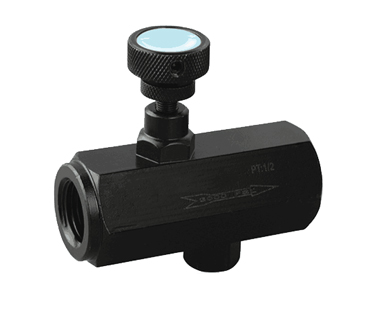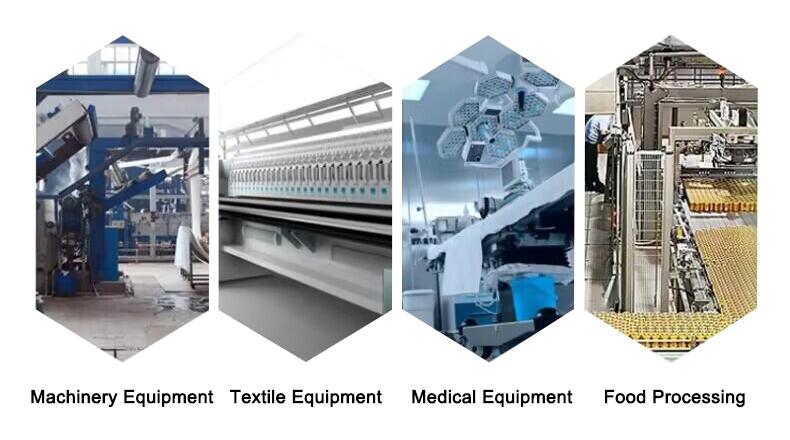What is a Flow Control Valve?
Flow control valve is a multifunctional valve that uses a high-precision pilot method to control flow. It is suitable for pipelines where the flow and pressure need to be controlled in water distribution pipes to keep the predetermined flow rate unchanged, limit the excessive flow rate to a predetermined value, and reduce the upstream high pressure appropriately, so that the flow rate downstream of the main valve will not be affected even if the pressure upstream of the main valve is changed.
Basic knowledge
Flow control valve is under a certain pressure difference, relying on changing the size of the throttle port liquid resistance to control the flow of the throttle port, so as to regulate the speed of the actuator (hydraulic cylinder or hydraulic motor) movement of the valve class. Mainly includes throttle valve, speed control valve, relief throttle valve and shunt collector valve. Installation form for the horizontal installation. The connection is divided into flanged and threaded; welded. The control mode is divided into automatic and manual. ATO offers a wide range of flow control valves in different sizes, 1/2", 1/4", 3/4", 3/8" hydraulic flow control valve.

Working Principle
The structure of digital flow control valve is composed of automatic spool, manual spool and display part. The display part is composed of flow valve movement, sensor transmitter, electronic calculator display part.
Its work is extremely complex. The measured water flow through the valve, the water flow impact flow movement within the impeller, impeller rotation and sensing transmitter sensing, so that the sensor sends out the flow rate is proportional to the signal, the flow rate signal through the wire into the electronic calculator, after the calculator calculations, the microprocessor processing, the flow rate value is displayed.
Manual spool valve is used to adjust the flow rate, according to the display value to set the required flow rate value. The automatic spool is used to maintain a constant flow, that is, when the pressure in the pipe network changes, the automatic spool will be under the action of pressure to automatically turn on and off the valve port to maintain the set flow rate value unchanged.
Features
- A change in the conventional throttle valve using orifice plate or purely mechanical principle of reducing the watershed area, the use of the relevant guide valve, to minimise the loss of energy in the throttling process
- High control sensitivity, safety and reliability, easy commissioning, long service life.
Flow control valve can automatically achieve the flow balance of the system without external power supply. By keeping the pressure difference between the front and rear of the orifice plate (fixed aperture), the flow rate is limited, therefore, it can also be called fixed-flow valve.
The object of fixed-flow valve is the flow, can lock the amount of water flowing through the valve, rather than for the balance of resistance. He was able to solve the system's dynamic dysfunction: in order to maintain a single refrigeration machine, boilers, cooling towers, heat exchangers, these devices operate at high efficiency, it is necessary to control the flow of these devices is fixed at the rated value; from the end of the system, in order to avoid dynamic regulation of the interactions, but also need to limit the flow of the device or branch at the end.
In the design of the problem should be noted that the disadvantage of flow control valves is that the valve has a minimum working difference in the requirements of the general product requirements of the minimum working differential pressure of 20KPa, if installed in the most unfavourable circuit, is bound to require the circulating pump to increase the working head by 2 metres of water column, so it should be taken to the near end of the installation, the distal end of the restlessness of the method. Users away from the heat source distance greater than 80% of the heating radius do not install this flow control valve.
Application
- Hydraulic Systems: Flow control valves are integral components in hydraulic systems, which are widely used in industries such as construction, agriculture, and manufacturing. In hydraulic systems, these valves regulate the flow of hydraulic fluid to control the speed and movement of hydraulic actuators, such as cylinders and motors. This precise control is essential for tasks like lifting, lowering, and positioning heavy machinery, providing the necessary force and accuracy required in these applications.
- Water Treatment Plants: In water treatment plants, flow control valves play a crucial role in managing the flow of water throughout the treatment process. These valves help regulate the rate of water flow, ensuring that each stage of the treatment, from filtration to disinfection, occurs at an optimal pace. Controlling the flow is essential for achieving effective water treatment, maintaining water quality, and ensuring that treated water is distributed efficiently to consumers.
- Oil and Gas Industry: Flow control valves are extensively used in the oil and gas industry to regulate the flow of fluids in pipelines and processing units. In extraction operations, these valves help control the rate of fluid flow during drilling and production. Within processing facilities, flow control valves contribute to the precise management of oil and gas streams, optimizing separation, refining, and transportation processes.
- Manufacturing Processes: Various manufacturing industries, including chemical, pharmaceutical, and food processing, rely on flow control valves for precise control over fluid flow during production. In chemical manufacturing, for example, these valves are used to regulate the flow of raw materials and control reaction rates. In pharmaceutical manufacturing, flow control valves are crucial for maintaining accurate dosages and ensuring the quality of the final product. Additionally, in food processing, these valves contribute to precise mixing, blending, and filling operations.
- HVAC Systems: Heating, ventilation, and air conditioning (HVAC) systems utilize flow control valves to regulate the flow of air and fluids. These valves play a key role in balancing air distribution, controlling the temperature in different zones, and optimizing energy efficiency. By adjusting the flow of air or water within the HVAC system, these valves help maintain a comfortable and controlled indoor environment.
- Aerospace Industry: In the aerospace industry, flow control valves are employed in various applications, including aircraft hydraulic systems and fuel management. These valves contribute to the precise control of fluid flow, ensuring the reliable operation of critical systems and components in aircraft, such as landing gear, flight control surfaces, and engine fuel systems.


